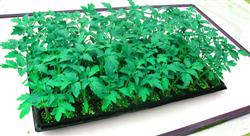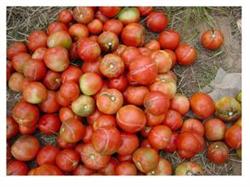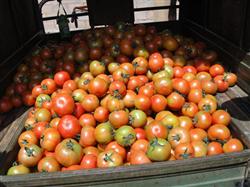Pay attention to temperature and Light Control Technology of Tomato in Winter

After entering winter, with the shortening of light time and the lower temperature at night, the humidity in the greenhouse will gradually increase, and some low-temperature and high-humidity diseases are very easy to occur, which have an adverse impact on the normal growth of tomatoes. The key points of technical management of tomato in winter: temperature management. After entering winter, greenhouse tomatoes should focus on heat preservation and temperature increasing. Low temperature is easy to cause tomato falling flowers and fruits, or even freeze injury, and the fruit setting rate will be greatly reduced, thus seriously affecting the yield. Therefore, it is necessary to scientifically control the temperature in the greenhouse, generally keeping the temperature in 23 ℃ ~ 28 ℃ in the daytime and 15 ℃ ~ 18 ℃ in the evening. The above temperature is the optimum temperature for tomato growth. In case of blizzard or gale cooling weather, coal stove, heating or artificial supplementary lighting can be used to heat up. Lighting and ventilation. Tomato is a light-loving crop. When the light is sufficient, the plant grows vigorously and has strong disease resistance. On the contrary, it will not only cause the sudden growth of the plant, but also create conditions for the infection of the disease. Methods such as hanging a reflective screen on the back wall, regularly cleaning the dust or dirt on the greenhouse film, and removing fog droplets in the greenhouse film can be used to increase the light in the shed. Ventilation can achieve the purpose of dehumidification, ventilation and temperature regulation. The ventilation time should be adjusted according to the weather conditions, but a certain amount of ventilation time must be ensured every day, which is beneficial to the normal growth of the plant. Watering and fertilizing. Watering should be combined with topdressing, not just clear water. Fertilizer can not use a single element fertilizer, it is best to use ternary compound fertilizer or flushing fertilizer, combined with humic acid, active bacterial fertilizer, calcium fertilizer and other micro-fertilizer. Timely supplement of fully nutritious fertilizers can provide necessary nutrients for tomato growth and development, otherwise physiological diseases are easy to occur. It is necessary to choose continuous sunny days, and the amount of water should be small, and the time is generally chosen in the morning or noon. Prevention and control of diseases. Winter is the high incidence period of Botrytis cinerea, late blight and bacterial diseases of tomato, which should be mainly prevented. In general, it can be sprayed once every 5-7 days, and pyrimidine + streptomycin + methyl topiramate can be used alternately. Or ethylheximide + streptomycin + diphenyl ether nail ring file and so on.
- Prev

Coping techniques of Tomato Fruit cracking
First, strengthen the management of water and fertilizer. The root system of the plant grew well by ploughing the soil deeply and applying more organic fertilizer. When the temperature of tomato falls sharply after autumn, we should pay more attention to the management of soil moisture to avoid the rapid change of soil moisture. When cultivating in open field, we should water more at ordinary times to avoid drastic changes in soil moisture when it rains suddenly, and drain it in time after rain.
- Next

How to store tomatoes in winter
The key to tomato storage in winter is heat preservation. The tomato used for winter storage is the green ripe fruit harvested from the plastic greenhouse cultivated after autumn. The green ripening tomato is most afraid of low temperature. If the tomato is stored below 8 ℃ for a long time, the fruit will suffer frost damage, the surface will appear watery spot sinking, browning, and the fruit pedicel will become light brown.
Related
- Where is it suitable to grow horseradish in China? it is expected to see the middle altitude horseradish in Alishan.
- How to prevent tomato virus disease reasonably? (Control methods included)
- Many people like to plant towel gourd on the balcony. What are the main points of this method and management?
- What crops can chili peppers be mixed with?
- Fertilization techniques and matters needing attention in Tomato
- What are the grafting techniques for peach seedlings in spring?
- Harm and control methods of root swelling disease of Chinese cabbage
- What are the pests of sweet potatoes? How to prevent and cure it?
- Symptoms, causes and Control methods of navel Rot in Tomato
- The cause of "Cucumber rotten bibcock" in Farmers' planting Cucumber and its Control Plan

